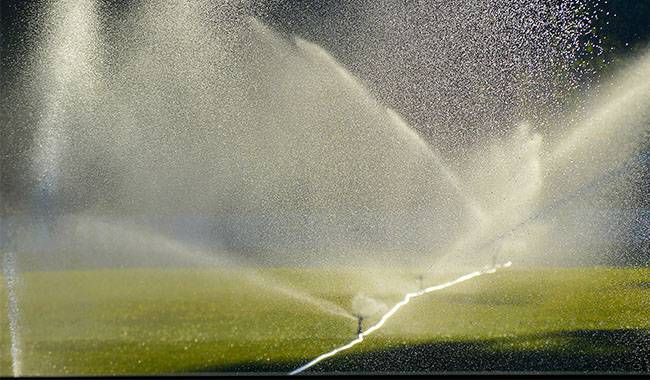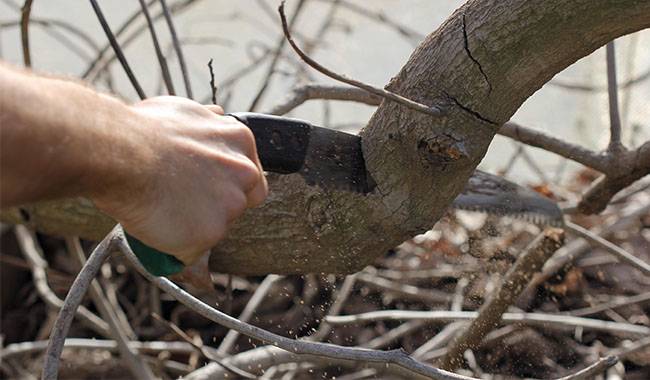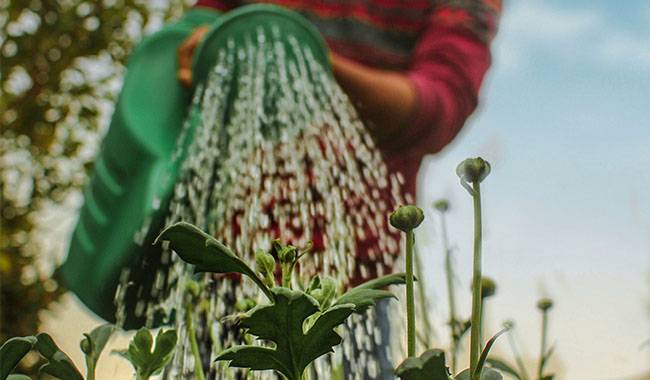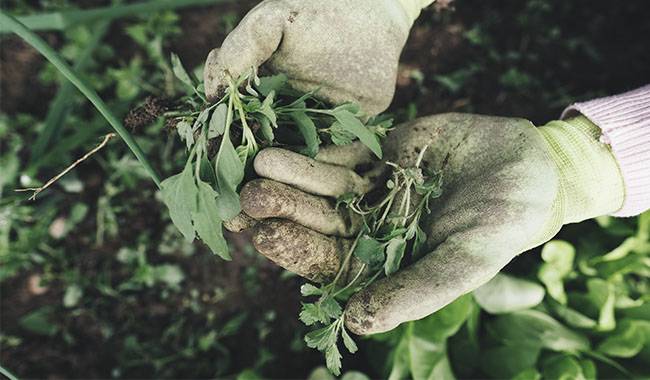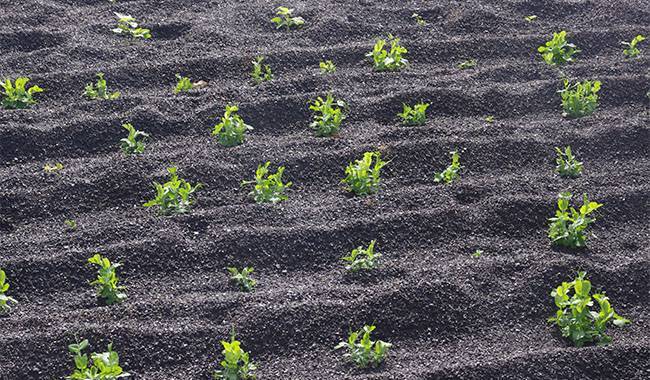
Sometimes, soil analysis shows that the soil has enough nutrients, but the plants do not develop. What is the reason for this? It turns out that one reason is the accumulation of too many free hydrogen ions in the soil as a result of chemical reactions. They determine the soil pH (soil acidity ). In an acidic environment, many vegetables and horticultural crops cannot grow and develop because the compounds formed by the reaction are not absorbed by the plant roots. It is proven that nutrients are present in the soil, but the plant roots “do not see” them and start to “starve”, thus stopping growth and development.
Some of the soluble salts are carried away by rain and meltwater outside the plant root system, which in turn depletes the soil. Long-term application of mineral fertilizers alone can also acidify the soil. The cumulative effect of all negative processes on the soil will increase the acidity, in which case no additional fertilizers, irrigation, and other agricultural practices will help. The soil will need to be acidified.
WHAT DOES SOIL DEACIDIFICATION MEAN?
The vast majority of vegetable and fruit crops grow and develop well in neutral, slightly acidic, or slightly alkaline soil conditions only. Therefore, in order to create optimal conditions for plants, the acidity in the soil must be removed and instead neutralized (agrochemical term – de-acidification).
DEGREE OF SOIL ACIDITY
Indicators of soil acidity are influenced by the amount and composition of chemical elements. The degree of acidity is indicated by the pH symbol. pH value depends on the quantity and composition of chemical elements in the soil. Chemical tests have shown the optimal supply of nutrients for vegetables and horticultural crops according to РН = 6.0-7.0.
All values below 7.0 are considered acidic, and the lower the number designation, the higher the acidity. As with acidity, the biological processes of plants are affected by alkalinity due to the presence of alkaline elements in the soil. Alkalinity is reflected in the pH value as a value higher than 7.0 units (Table 1).
These and other deviations from neutrality indicate the degree of availability of certain elements to plants, which may decrease or, conversely, increase so much that nutrients become toxic and plants die.
Table 1: Soil types by acidity
| Soil acidity | рН, unit | Soil type |
| Strongly acidic | 3.5 – 4.5 | Swampy soil, fern peat |
| Acidic | 4.6 – 5.3 | Peaty, coniferous, clayey turf soils |
| Slightly acidic | 5.4 – 6.3 | Heath, sod |
| Neutral | 6.4 – 7.3 | Sod, humus, deciduous plants |
| Slightly alkaline | 7.4 – 8.0 | Carbonate |
| Alkaline | 8.1 – 8.5 | Carbonate |
| Strongly alkaline | 8.5 – 9.0 | Carbonate |
WHAT DOES SOIL ACIDITY AFFECT?
Soil acidity affects the solubility, availability, and uptake of nutrients by plants. Therefore, phosphorus, iron, manganese, zinc, boron, and other elements are more available and better absorbed by some plants in moderately acidic and acidic soils. If acidity increases (pH=3.5-4.0), on the contrary, more nutrient uptake is observed, inhibiting root growth and their working activity, and plants become sick due to a lack of necessary nutrients for their organs to receive.
In highly acidic soils, the content of aluminum increases, which prevents the flow of phosphorus, potassium, magnesium, and calcium to the plants. Soils begin to accumulate substances that negatively affect useful microflora. The processing of organic matter into humus substances and further processing into plant-usable mineral compounds effectively ceases.
An alkaline environment also significantly affects many biological processes. It hinders the uptake of a number of macro and microelements required by plants. Phosphorus, magnesium, boron, and zinc become unavailable to plants. The opposite effect is observed in some plants: in an alkaline environment, the plant roots take up mineral fertilizers intensively until they become toxic.
In agrochemical studies, the optimal limits of soil acidity for different crops, ornamentals, and flowering plants were determined experimentally (Table 2). For vegetable crops, the most favorable is soil acidity in the neutral or weakly acidic range (РН=6.0-7.0).
Table 2. Optimal soil acidity levels for horticultural crops in the country
| Soil pH (soil acidity ) | Crop name |
| 5.0 – 6.0 | Watermelon, potatoes, pumpkin, bindweed, dock |
| 5.5 – 7.0 | Tomato, cabbage, carrot, corn, garlic, cucumber, pepper, windbreak, rhubarb, sugar beet, pea |
| 6.0 – 7.0 | Lettuce, onion, beans, squash, spinach, beet beans, eggplant, garlic, kale, hugger kale, radish, zucchini, beets, chives, carrots, tomatoes, leeks, parsnips, leeks, nutmeg melon, chicory, cucumber, horseradish, spinach, rhubarb |
| 7.0 – 7.8 | cauliflower, artichoke, celery, lettuce, onion, asparagus, parsley |
| 4.0 – 5.0 | heather, hydrangea, erica |
| 5.0 – 5.6 | juniper |
| 5.0 – 6.0 | pine |
| 6.0 – 7.0 | ornamental woody plants, ornamental perennial herbs, and summer plants, turf grasses Fruit crops (plums, cherry trees) |
| 5.5 – 7.0 | Apples, strawberries, pears |
| 7.0 – 7.8 | clematis |
| 4.0 – 5.0 | Blueberries, cranberries, currants, gooseberries, raspberries |
| 5.0 – 6.0 | lily, phlox |
| 5.5 – 7.0 | carnation, iris, rose |
| 7.0 – 7.8 | peony, delphinium |
METHODS FOR DETERMINING SOIL ACIDITY
When acquiring land for temporary or permanent occupation, it is necessary to perform a soil analysis to determine its fertility level, acidity, and whether treatment is needed to reduce acidity, alkalinity, etc. The most accurate data can be obtained by taking a soil sample for chemical analysis.
If this is not possible, you can use a homemade method to determine acidity levels in general:
- Using litmus indicator paper strips.
- By observing the weeds growing on the site.
- A solution of edible vinegar.
- Decoction of leaves of some berries and horticultural crops.
- With a device (pH meter or soil probe).
Determination of soil acidity with indicator paper
Along the diagonal of the plot, dig holes in a spade bayonet with a smooth wall. Along with the entire depth of the straight wall, remove a thin layer of soil, mix it on aluminum foil and take a 15-20 gram sample. Stir the samples separately in a cup of water, let them stand, and then dip the indicator paper into the water. Along with the indicator strips, there is a color change chart with values on the package.
When changing the color of the strip (the color scale may be a different shade):
- Red – the soil is acidic.
- Orange – moderately acidic; orange – slightly acidic; orange – slightly acidic
- Yellow – slightly acidic;
- Slightly greenish – neutral.
- All shades of blue – alkaline.
To more accurately determine the acidity of the soil, compare the color reading with the digital reading (on the package) indicating the pH value.
Determining soil acidity by weeds
Growing on acidic soils.
Horse sorrel;
plantain large and lanceolate;
horsetail;
common mint;
Ivan da Marya;
wood lice;
heather;
mosses;
sedge;
slender bent;
wild mustard;
bloodroot;
The highlander is pochechuy;
lupine blue;
creeping buttercup.
The alkaline areas are mainly.
larkspur;
wild poppy;
field mustard;
fluffy purse;
beans.
Suitable for growing a most garden and horticultural crops in neutral or slightly acidic soils.
mother and stepmother;
field bindweed;
field radish;
field cornflower;
chamomile;
meadow and mountain clover;
meadow fescue;
wheatgrass;
quinoa;
stinging nettle;
garden thistle;
soapwort medicinal;
drooping resin;
rank is meadow;
erythematosus is flat-leaved.
Determination of soil acidity by a simple method
Vinegar
This definition is fairly approximate but will indicate the direction of further work on the site. On a diagonal plot, collect a few handfuls of soil in a separate container. Pour the selected soil sample on a film and apply a few drops of vinegar (6% or 9%). If you can hear a hissing sound or if the soil boils and bubbles, this means that the soil is neutral and does not need to be de-acidified before it can be used.
Tea made from cherry or currant leaves
Pour a few leaves into boiling water and let sit for 15-20 minutes. Add a lump of soil. If the solution becomes bluish – the soil is acidic, discolored to green – it is probably neutral or alkaline.
Grape juice (not wine)
This analysis can be done in early spring or late fall when there are no green plants. A piece of soil is thrown into a glass of juice. If the juice has changed color and bubbles are released, the soil is neutral acidity.
Soda water
In a small container, prepare a slurry of soil and water. On top, use a large amount of salt with baking soda. A hissing sound appears – the soil is acidic. The acidity must be determined more precisely in order to take the necessary action.
How to determine the acidity of the soil with special tools
The most accurate results can be obtained at home using analytical devices: pH meters, acidity meters, soil probes. They are very easy to use. Simply insert the tip of the probe into the soil and in a few minutes, the indicator of soil acidity will appear on the scale.
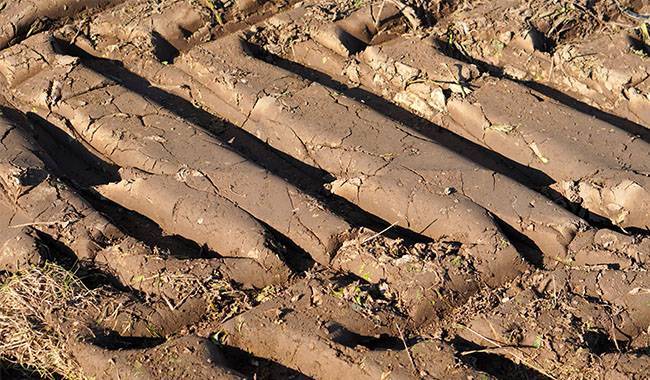
CORRECTING SOIL ACIDITY IN GARDEN PLOTS
An analysis of data on optimal soil acidity under vegetable, horticultural and other crops shows that not all crops need neutral soil. Some plants usually grow and develop on slightly acidic or even acidic soils. If it is necessary to reduce or neutralize the acidity of the soil, a de-acidifier can be used.
Soil acidification can be carried out by.
- liming;
- insulating;
- the use of green manure crops,
- deoxidizing drugs.
Soils can be deacidified by: liming; ashing; the use of fertilizer crops; and the use of fertilizers.
Materials used for soil deacidification include.
- fluff lime;
- dolomite (limestone) flour;
- lake lime (drywall);
- a piece of chalk;
- peat ash;
- wood ash;
- siderates;
- complex deoxidizing preparations.
Before carrying out soil deoxidization, it is necessary to partition the dacha area and assign areas for vegetable gardens, berry gardens, herb beds, summer houses with outbuildings, garages, etc. To select those of them, acidity tests must be performed. The test is conducted and after determining the acidity level of the soil in the assigned area, the correction is proceeded.
The most common method of acidification is lime treatment with quicklime, dolomite powder, chalk, or lake lime. The amount of limestone applied varies depending on the soil type and acidity level (Table 3).
Table 3 Soil deacidification by the lime method
| Acidity | Soil pH | Lime powder, 2.2 lb/11 sq ft (Clay and loamy soils) | Dolomite powder, 2.2 lb/11 sq ft (Clay and loamy soils) | Lime powder, 2.2 lb/11 sq (Sandy and sandy loamy soils) | Dolomite powder, shale, chalk, 2.2 lb/11 sq ft(Sandy and sandy loamy soils) |
| High acid | 3.5 – 4.5 | 0.5 – 0.75 | 0.5 – 0.6 | 0.3 – 0.4 | 0.3 – 0.35 |
| Acid | 4.6 – 5.3 | 0.4 – 0.45 | 0.45 – 0.5 | 0.25 – 0.3 | 0.20 – 0.25 |
| Slightly acidic | 5.4 – 6.3 | 0.25 – 0.35 | 0.35 – 0.45 | 0.2 – 0.4 | 0.1 – 0.2 |
| Neutral | 6.4 – 7.3 | Do not lime | Do not lime | Do not lime | Do not lime |
Liming of acidified soils is usually done after 5-7 years, light soils – after 4-5 years, and peat soils – after 3 years. Liming is done to a depth covering 8inch (20 cm) of the soil layer. If the lime is introduced in smaller norms, then only 2-4inch (5-10 cm) layer is limed. When applying lime, it should be spread evenly on the soil surface. It is recommended to water the soil after the application. The neutral reaction of the de-alkalized soil will be reached within 2-3 years.
Lime is a strong deacidifying agent and can burn young plant roots if used in large quantities. Therefore, lime treatment should be applied in the fall after digging. During autumn and winter, lime will come into contact with acids and other compounds in the soil, reducing their negative effects on the plants. In this regard, dolomite powder and chalk are gentler and safer soil deacidifiers for plants. It is safe to use them for acid removal in spring, preferably when the moisture is closed.
It is recommended to apply lime on heavy clay soils. Dolomite powder and chalk are more effective on light soils with sandy and sandy loamy soils. Dolomite powder enriches the soil with magnesium, potassium, calcium, and some trace elements. Chalk is more effective than dolomite powder in acidification.
Note! Soil deacidification with lime cannot be combined with fertilizer application. They are separated in time – de-acidification in autumn and fertilization in spring. Otherwise, calcium superphosphate, urea, ammonium sulfate, ammonium nitrate, and other substances will interfere with the plant’s nutrient supply.
Soil deacidification by ashing
From the ash material, peat and wood (timber) ashes are used for soil deacidification.
Wood ash is a wonderful natural deacidifier. The application rate for basic deacidification is 1.3 Lb/11 square feet of area. If applied as an additional deacidifier the following year after basic deacidification performed under incomplete deacidification specifications, it will cost 0.2-0.4 Lb wood ash/11 sq. ft.
Wood ash should be applied in the fall and not mixed with fertilizer. Being a fairly strong base, it reacts chemically with nutrients in the soil, making them unavailable to plants. Therefore, it is possible to de-acidify the soil with ash, but for another reason, it will not be harvested.
Peat ash has much fewer active ingredients and reacts chemically with soil acids. Therefore, the amount of peat ash is increased 3-4 times for the main application and 1.5-2.0 times for the supplementary application. The application rules are the same as for lime treatment.
Soil deacidification using green manure
To de-acidify the soil, some gardeners use green manure crops. Fall-sown monocultures and perennials with highly penetrating root systems loosen the soil and lift nutrients from deep in the soil to the upper layers. A large amount of green biomass is formed, and they actually replace manure, which has a decomposing function.
Among the green manure plants, the following plants have the properties of soil deacidifiers.
lupine;
alfalfa;
phacelia;
oats;
rye;
legumes;
Vika.
In general, all glycosides, which increase the organic matter content of the soil, help to correct the acidity of the soil. The best preparation to keep the soil at a neutral acidity level is the continuous use of green manure. The soil will become fluffy, fertile, and have a neutral response without the need for acidifiers.
Use of Ready-to-Use Soil Amendments
Recently, comprehensive soil amendments have appeared on store shelves. They are very convenient because they greatly reduce the amount of physical labor. In addition, they help improve the fertility of de-acidified soils, in addition to containing material de-acidifiers and useful ingredients.
Calcium, magnesium, phosphorus, boron, zinc, copper, manganese, cobalt, molybdenum.
and other elements required by plants during the growing season.
These preparations are applied in the fall under excavation followed by irrigation. Neutral soil response occurs in years 2-3.
More related information about soil




